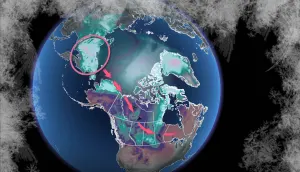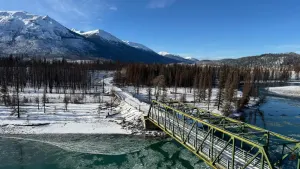
Despite balmy temperatures, Winsport hits opening day target
The slopes are ready, thanks to modern technology.
A week after Calgarians were sipping patio beers amid 16-degree temperatures on 17th Ave, it’s no small miracle that they can now have a drink in ski boots just a few kilometres away.
Calgary Olympic Park at Winsport hit its opening day target on November 24, despite a fall season full of above-average warmth and below-average snowfall. It’s all thanks to the magic of snowmaking (with some help from the atmosphere).

While colder temperatures are undoubtedly ideal for efficient, quality powder production, modern snowmaking tech and a unique meteorological concept allow snowmakers to do their thing even when the mercury rises above zero.
The flexibility comes thanks to the concept of “wet-bulb temperature.” This is essentially the lowest temperature achievable by evaporation – a process that requires energy in the form of heat as water droplets vapourize.
Suppose snowmaking water is blasted into the air just at or above freezing level, and the air around it is dry or has low humidity. In that case, evaporation will produce a microclimate around the remaining liquid water particles that help them freeze.
“We could be at zero degrees ambient but have a minus five-degree wet bulb so that it might feel pretty warm out there, but we’re making pretty decent snow,” Winsport Venues Manager Ian Newcombe explains.

As Winsport Venues Manager Ian Newcombe explains, the resort’s 50-or-so snow guns are fully automated and can quickly be fired up if optimal conditions arise. The system uses upwards of 10,000 litres of water a minute at total capacity. (Connor O’Donovan)
Constant grooming also helps defeat the heat.
The resort strategically turns over and packs down its snow base, which had reached 50 centimetres by opening day, to keep the snow prime for carving.
“That’s creating a refrigeration effect, which is keeping the snow cold and helping us keep the quality we’re looking for,” says Newcombe.
“We’re usually looking at about 25 24-hour periods to make all the snow across the hill, and that can take anywhere from six to ten weeks depending on temperatures and how long we can keep the system running.”
Header image: Connor O'Donovan.











